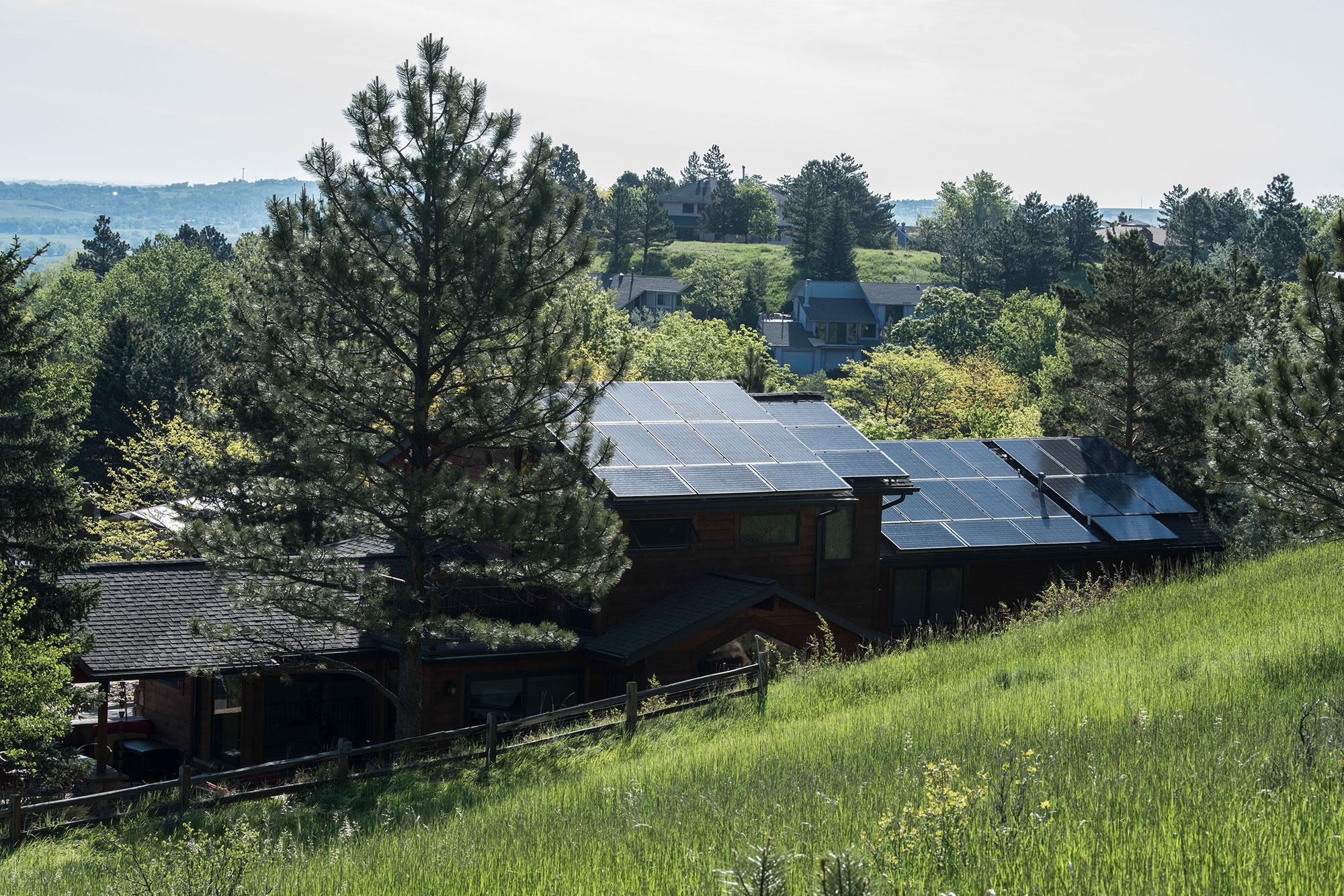Shadows can damage solar panels

Shadows not only reduce the performance of photovoltaic modules integrated into buildings – they may also shorten their lifespan.
“Over the next 30 years, Switzerland will need at least 20 times more solar panels to ensure its future energy supply as envisaged in the Energy Strategy 2050”, according to Alessandro Virtuani, a physicist at EPFL. The majority of these panels will have to be installed on buildings, as Switzerland, like some other countries, does not have enough space for free-standing photovoltaic systems.
Therefore, photovoltaic modules are increasingly being integrated into construction elements of roofs or facades. In an SNSF-funded project, Alessandro Virtuani's team has investigated for the first time how durable these systems actually are. It became apparent that unfavourable shadows could pose a problem.
The research team from EPFL and the University of Applied Sciences and Arts of Southern Switzerland (SUPSI) analysed the performance of 55 small systems integrated into roofs in Switzerland. They had all been operating for between five and ten years. The researchers did not identify any significant loss of performance in the systems on average during this period. However, some systems did considerably worse than others – a more detailed evaluation showed that this was partly to do with shadows over some modules. The team used a specially developed algorithm for this investigation, which automatically quantifies the intensity of shadows, taking the weather and performance data into account.
Over 100 degrees Celsius
"Unlike free-standing systems, solar panels integrated into buildings cannot be perfectly positioned”, says Alessandro Virtuani. It is therefore impossible to avoid chimneys, aerials or neighbouring trees casting constant or intermittent shadows over certain modules. This not only reduces the performance of the solar cells (greatly in some cases), it can also mean that they wear out more quickly. In rows of interconnected modules, if some are in the sun and some are in the shade, the electrical resistance in the shaded cells increases. These can heat up locally to over 100 degrees Celsius, sustaining damage.
In general, the power is automatically diverted around shaded cells via a bypass diode when necessary. For modules integrated into buildings that are constantly or repeatedly in shadow, however, these diodes can more easily become damaged in the long term, as they are not intended to be used so frequently.
“These results clearly show how important it is to develop innovative solutions to reduce the strain and overheating caused by shadows, and how a good system design is critical in ensuring longer operational lifetimes.”, Alessandro Virtuani adds. His aim now is to refine his research method and to analyse hundreds of systems over the next few years in order to obtain even more robust data over longer periods. Ultimately, a solar system should ideally be able to produce renewable energy reliably for 30 years or more in a cost-competitive way.
A. Fairbrother et al.: Long-Term Performance and Shade Detection in Building Integrated Photovoltaic Systems. RRL Solar (2021)